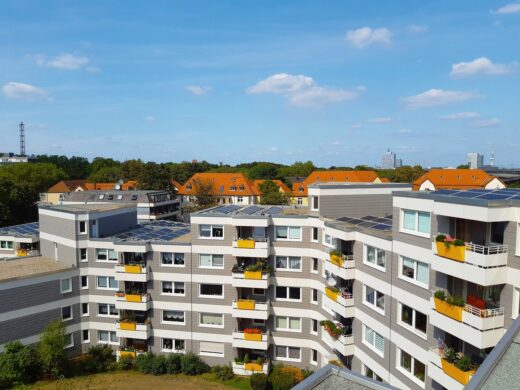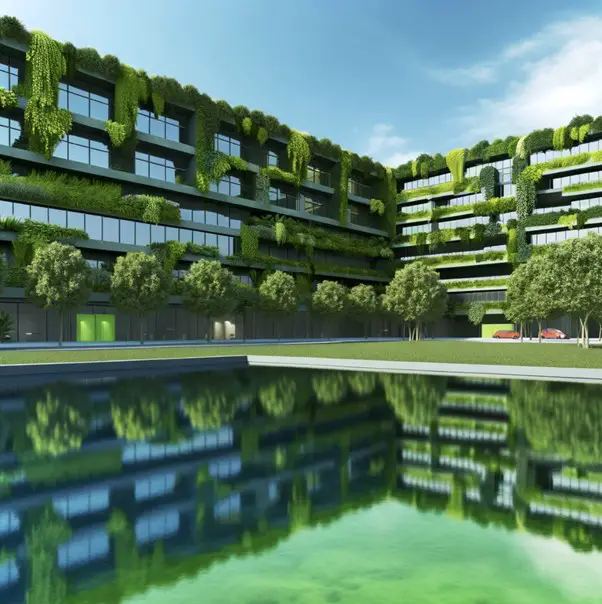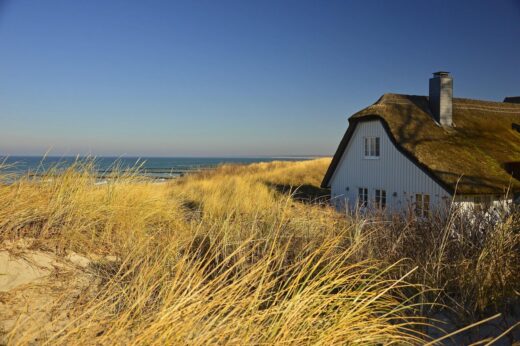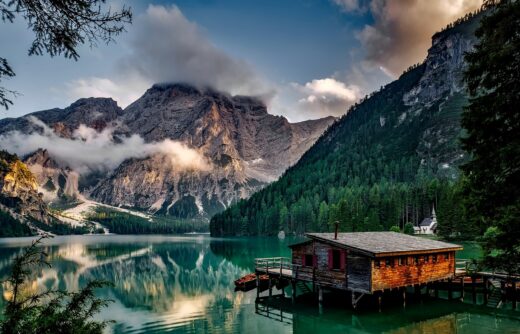Integrating nature into architecture, Green walls guide, Healthier living spaces tips, Eco property design advice
Green walls and reflected water: examples of integrating nature into architecture
7 March 2024
One of the great challenges in modern property development is combining nature with avant-garde design. Fortunately, architects around the world are showing how this can be done to provide us with better and healthier living spaces.
Speaking of finding a balance, why not explore a different kind of harmony at Slotozen Casino? It’s an online casino where you can enjoy various games and add an extra layer of excitement to your leisure time. Just as architects blend nature with avant-garde design, Slotozen casino brings together the thrill of gaming in an online environment. Discover a new dimension of entertainment and experience the perfect blend of nature-inspired architecture and online gaming thrills.
Some of the best techniques
There are numerous ways to bring nature and property together in new developments. For example, roof gardens offer a smart way to add plants to the urban landscape. Among the most radical proposals in this regard is the new campus at FPT University in Vietnam, where the building will be almost entirely covered with trees.
Another approach is to design structures to blend in with the natural landscape. We can see examples in Scotland, where architects Chambers McMillan claim that more people are requesting properties that are almost invisible. They generally use materials that blend almost perfectly into the background.
Utilising natural resources such as water, wind and sunlight is also part of this growing movement. It often makes sense for the designer to frame buildings around what nature already provides where they are working.
In other cases, this can be achieved through the use of locally sourced materials. For example, a building may incorporate locally quarried stone or wood from trees that once grew there. Ideally, these materials are used as focal points when placed in prominent locations.
Which cities have done this well?
There have been some good examples of cities and areas that successfully combine nature and architecture. Singapore is generally recognised as a world pioneer in this respect. Vegetated or highly reflective glass and steel buildings are transforming large parts of this island city into a giant garden.
Singapore could soon be the greenest city in the world, but there are others that also claim this title. Many places look to Singapore for inspiration when it comes to designing new structures that bring residents closer to nature.
In the spectacular modern architecture in Dubai, we can also see how nature has been intelligently integrated. Perhaps the best example is Dubai Marina. This popular area integrates the water flowing through it in the form of an artificial canal more than 3.5 kilometres long.
In addition, the use of glass and bright colours ensure that water is reflected on numerous surfaces. This beautiful visual effect explains why the area in Dubai Marina It is ranked as the most popular and sought-after area for buying flats in the UAE in the Bayut Dubai Real Estate Market Report 2018.
London is another place where efforts are being made to create an eco-friendly city that is more pleasant to live in. Future plans in London include a building called The Reef, which used the ghost fish and stone plant as inspiration to use only natural products. Light.
London is also configured to contain the largest living wall in Europe. This will be at Citiscape and it will contain 400,000 plants to produce six tonnes of oxygen each year. As this building is in a high traffic area in one of the largest cities in the world, it is a good example of how nature can help us combat some of the drawbacks of modern life.
As people around the world become more interested in living in natural environments, we are likely to see more and more buildings that combine the best of modern architecture with the timeless benefits of nature.
Building bionics: How architects and engineers are rediscovering nature
Nature often creates the most resilient structures. Bionics decodes their principles in order to utilise them for houses and other buildings.
Bionics follows the principle of technically imitating forms and principles from nature. There is a good reason for this, including in the property sector. While we only started building houses as we would imagine them today around 10,000 years ago, nature has been perfecting structures that work for millions of years – and relentlessly punishes any mistakes. So there is a large pool from which we can draw with enough imagination.
The best-known principle that is already used commercially in property is probably the lotus effect – hardly any popular science magazine has failed to report on it. The surface of the eponymous plant has countless ultra-fine papillae that are coated with wax. This minimises the adhesive forces: dirt does not adhere to the surface, nor do water droplets, which roll off and take impurities with them. Discovered in the 1970s and taken up technologically, the concept is now used in façade paints, for example.
Trees offer more than trunks
Even building materials that we have been using for thousands of years still offer us unimagined possibilities. Perhaps we have never taken such a close look or we simply did not have the scientific and technical understanding to recognise how we can take up nature’s strategies for ourselves. Take wood, for example: since time immemorial, we have been cutting down trees, stacking them on top of each other and thus creating shelters for ourselves.
If a trunk is damaged, we have to replace it at some point at great expense. The living tree is much trickier. It forms ribs and bulges in places that are under heavy stress from the environment. If cracks do occur, the strong internal pressure in the cell tissue ensures that new biological material immediately swells into the damaged areas and closes them. Researchers at the University of Freiburg are working on this principle to develop a self-repairing foam for the air-filled membranes used in halls and sports stadiums.
The sea urchin must know
Elsewhere in the south, in the Energy Efficient Planning and Building degree programme at Augsburg University of Applied Sciences, young engineers are exploring the possibilities offered by models from nature. Who would be a better mute expert on stable structures than the sea urchin, whose survival depends on a shell to protect it from predators? A pavilion is created from polygonal, interlocking panels using a segmental construction method, which is not only resistant but also comparatively light. Another project is modelled on the natural movements of plants. Pneumatic actuators are used to create a shading system for complex curved façades that largely manages without joints and thus minimises its own wear and tear.
Growing architecture
Learning from nature is one thing, but scientists are also investigating another approach: integrating living forms into architecture. In the EU research project flora robotica, an interdisciplinary team is working on using computer-controlled lighting to encourage plants to grow in complex shapes.
The goal: a colony of plant-robot hybrids that work as a self-organising system. The structures that emerge are extraordinary. The idea of actually integrating such systems in the construction of houses naturally raises many questions. Firstly, the speed of growth: it would take decades to construct buildings on this basis. And plant growth is finite, so it sets the material limit at the top.
Nevertheless, with sufficient ingenuity, shapes created in this way can certainly be used in interior design, even if only as a unique, decorative element. The integration of nature and technology is still largely in its infancy; who knows what possibilities genetic engineering, for example, can still contribute to such a system. On the other hand, a research project for building botany at the University of Stuttgart is already a little closer to practical applicability. Growing trees are to be integrated into the architecture and, for example, replace or at least supplement beams made from traditional materials.
Comments on this guide to Green walls and reflected water: examples of integrating nature into architecture article are welcome.
Property
Property Posts
How to avoid wrong choices in real estate investing

Architects and Architecture
Architects and Architecture by Type – architectural selection below:
Comments / photos for the GGreen walls and reflected water: examples of integrating nature into architecture advice page welcome.







